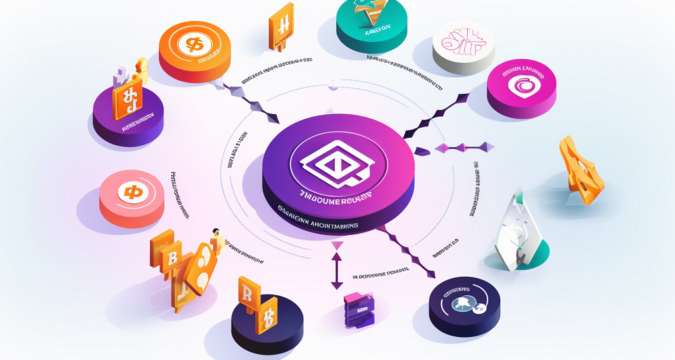
Prominent crypto custody firm BitGo has unveiled its token management services for digital asset platforms. In addition, established protocols, such as Sui, LayerZero, Worldcoin, and ZetaChain, were among the first users of the service.
BitGo’s Custodial Token Management Solution
BitGo has established itself as a pivotal participant in the digital asset domain by offering an all-inclusive custody platform. With the ongoing evolution of the digital asset ecosystem, BitGo hopes to provide a one-stop shop for the safe distribution, management, and custody of digital assets.
BitGo simplifies the vesting, unlocking, and on-chain processes of digital tokens through a regulated and insured custody platform, guaranteeing that the intricacies of asset management are handled with ease. The central component of BitGo’s offering is its qualified custodian service, BitGo Trust, which functions within a regulated framework for custodial token management.
This adds an extra degree of security and compliance, which is crucial in a sector that is still dealing with various regulatory obstacles. By providing this service, BitGo helps its clients with the technical and operational aspects of token management while also guaranteeing the safe storage of digital assets.
Navigating the Web3 Economy
The Web3 landscape has significantly evolved from the early days of solely blockchain transactions. In addition, the ecosystem has expanded into a programmable economy where new protocols and financial models can be created with a few lines of code, surpassing the previous limitations of simple digital asset transfers.
Tokens, in this context, are more than just assets; they stand for the fundamental utility, governance, and economics of decentralized platforms. But this change also presents new difficulties.
More protocol developers now have to perfect the technical aspects of their projects, such as tokenomics and validator steps, while also trying to draw in users and appease venture capital investors.
Sometimes, this focus on the technical aspects causes projects to be less focused on token management. However, delaying token management can result in operational issues, which BitGo’s head of sales, Thomas Chen, describes as a “slow-moving train wreck.”
When managing their tokens, many Web3 companies find themselves confused. For instance, they utilize a blend of web-based platforms, smart contracts, and non-custodial wallets for distribution; this necessitates managing numerous connections and integration points.
This complexity can pose serious challenges for individuals in charge of managing operations in terms of guaranteeing a seamless mainnet rollout and continuous token administration.
Enhancing ZKsync’s Cross-Chain Capabilities
Meanwhile, notable progress has been made with the integration of Chainlink’s Cross-Chain Interoperability Protocol (CCIP) into ZKsync, a layer-2 (L2) scaling solution utilizing zero-knowledge (ZK) technology. With this integration, the interoperability and functionality of decentralized applications (DApps) developed on ZKsync’s Era mainnet are improved.
ZKsync adheres to Ethereum’s security standards, providing enhanced network security, privacy, and scalability through the use of ZK technology. Thanks to Chainlink and ZKsync’s partnership, developers can now create DApps that function flawlessly across several blockchain networks.
With programmable instructions embedded in the smart contracts of receiving chains, developers can now carry out cross-chain token transfers. The CCIP’s arbitrary messaging feature, which enables programmers to create cross-chain smart contracts, is one of its most notable features.
The potential for decentralized applications is further expanded by these smart contracts, which can execute function calls and transfer data between smart contracts on different blockchains.
These new features will make it possible to create more effective DApps as blockchain networks grow more interconnected and lead to a wider acceptance of blockchain technology across a range of industries.
Growing Trend of Token Asset Services
The pairing of ZKsync and Chainlink’s CCIP fits into a larger pattern in which banks are exploring blockchain technology by tokenizing physical assets. As more institutions become aware of the advantages of tokenization—such as increased efficiency, security, and transparency in financial transactions—the trend will pick up greater speed.
Robust solutions that facilitate the smooth transfer and management of tokenized assets are becoming more necessary as financial institutions move on-chain. ZKsync positions itself as a way for these institutions to move into the blockchain space by integrating with Chainlink’s CCIP.
This partnership facilitates increased interoperability between various blockchain networks and offers a vital infrastructure to meet the rising demand for tokenized assets.


